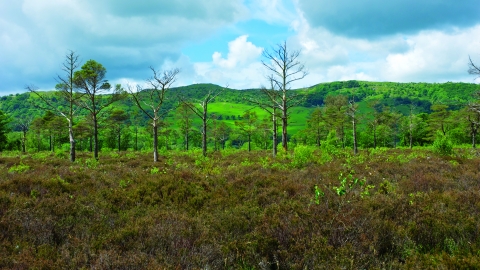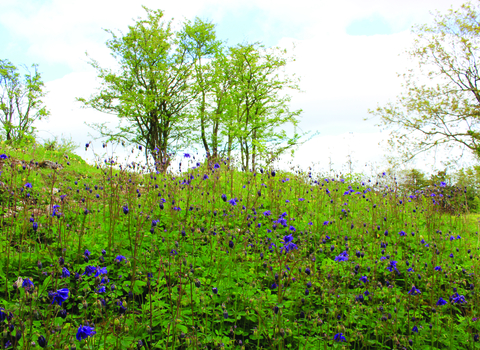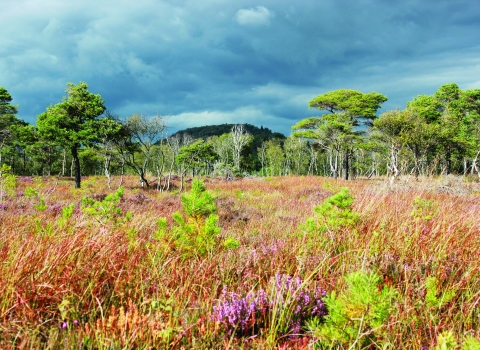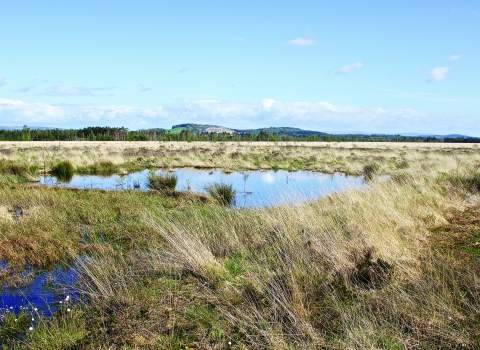
© John Morrison
Nichols Moss
Location
Know before you go
Dogs
When to visit
Opening times
Open all year roundBest time to visit
April to AugustAbout the reserve
Wildlife highlights
- Look out for large heath butterflies between June and August – they always rest with their wings closed
- Bog bush-crickets can be heard ‘singing’ on summer days
- Look for the oblong-leaved sundew which traps small flies on its sticky leaves
- In spring, green hairstreak butterflies are on the wing and the cotton grass is in flower.
- In spring, bog rosemary and sundew are flowering.
- In autumn, you can find bilberries and perhaps see woodcock.
- Snipe winter here and roe and red deer are often seen.
A raised peat bog
Once part of an extensive peat bog Nichols Moss would once have been part of a much larger peat bog connecting with the Trust's other reserves at Meathop and Foulshaw Mosses.
Nichols Moss is a raised mire which means that it receives moisture entirely from rainfall.
Since the end of the last ice age, wet conditions have allowed peat to accumulate to a depth of 5 metres (16 feet).
Waterlogged wildlife
Colourful Sphagnum mosses, cottongrass, cranberry, bog rosemary and bog asphodel are the main species you will see on the bog surface.
Look out for the locally scarce oblong-leaved sundew which occurs here together with the more common round-leaved sundew. Both species are insectivorous and trap small flies on sticky leaves.
Nichols Moss is perhaps best known as an important site for invertebrates. You can find butterflies such as green hairstreak and large heath, moths such as the eggar moth and the day flying purple-bordered gold moth, bog bush cricket and damsel and dragonflies.
You may also see both red and roe deer on the nature reserve.
Drying out at the edges
The edges of the mire are drier due to drainage of the surrounding land and some peat cutting has taken place. Here Scots pine and other trees have colonised.
In these drier areas you can find bilberry, bracken and narrow-leaved buckler-fern.
Keeping it special
Management of the nature reserve involves removing pines and blocking drains where possible.
Recent history
The nature reserve was purchased in 2000 with a generous legacy from the Ellwood Family.
Getting here
By car:
From A590 take minor road to Witherslack. Turn left in village centre then left again at Halecat. Take the first left signed as a cul-de-sac. Continue to the T junction and turn left. The reserve is reached by walking down the track for 430 metres, and is on the right hand side immediately before the concrete Nissen hut.
By bicycle:
The reserve 1.6km/1 mile from National Route 72 (Walney to Wear).
By public transport:
Buses run from Barrow in Furness, Ulverston, Newby Bridge, Grange over Sands and Kendal to Witherslack.
Species
Habitat
Contact us
Upcoming events at Nichols Moss Nature Reserve
If there are any upcoming events at Nichols Moss Nature Reserve we'll show them to you below

Support our conservation work on this nature reserve,
and protect Cumbria's wildlife & wild places.







